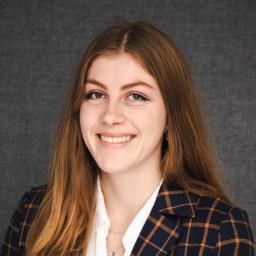Single-cell multiomic analysis of T cell exhaustion <em>in vitro</em>
Watch this on-demand webinar to learn how the power of a single-cell multiomic approach can be harnessed to comprehensively characterize T cells, and more
28 Jan 2022

In this free SelectScience® webinar, now available on demand, Dr. Mirko Corselli, senior scientific marketing manager at BD Biosciences, describes how simultaneous assessment of 38 proteins and 399 genes led to a refined definition of T cell maturational states, and to the identification of a donor-specific subset of terminally differentiated T cells.
Watch on demand to find out how distinct activation statuses corresponding to immunophenotypic and functional changes associated with T cell exhaustion were identified using an in vitro chronic stimulation model. The development of a flow cytometry assay for the validation and detection of biomarkers of interest discovered through the multiomic analysis is also discussed.
Watch on demandRead on for highlights of the Q&A session or register now to watch on demand.
What needs to be taken into consideration when designing large AbSeq panels?
MC: It is much, much easier to design a large panel because we don't have that complication of the fluorochrome changes or the fluorochrome viability and the spillover.
However, how do we go from 60 to 80 to 100 proteins? The consideration that you need to consider is your sequencing depth; how much do you need to sequence? As you increase markers and the number of markers you're going to analyze by sequencing, you also need to increase the number of reads to maintain the level of saturation of your sequencing.
So, bottom line, you can add 190, 200 proteins, but if you keep the same sequencing reads, you will lose resolution because now you are distributing the same number of reads to a much higher number of readouts. We've tested around 100, 150, so far, and we don't have any signs of steady hindrance. But you need to pay attention to your sequencing metrics and to your reads and saturation.
Is magnetic enrichment necessary when performing such experiments?
MC: The reason why we isolated the T cells, it's twofold. In this case, if you want to perform an activation, usually we want to start with the purest population, but even for the ancillary T cells, one major difference between AbSeq and flow cytometry is the number of cells that we can analyze.
For flow cytometry, we know we can analyze up to a million cells. If I want to look at rare CD4-positive T cells, I can run peripheral blood mononuclear cells (PBMCs), run through millions of cells and then gate on my population of interest. That is not a problem.
Now with AbSeq, currently we can load up to 20,000 to 40,000 cells per cartridge. So, if you want to analyze your CD4 subsets but you now load 40,000 of PBMCs, you will not be able to get enough data. Furthermore, you will waste a lot of time and money sequencing cells that you don't need. We usually exclude through flow cytometry through dump channels. We cannot do that by sequencing, and we have to waste that money. So that's one reason why, at the very minimum, we want to magnetically enrich.
If you're looking at very rare cells, we recommend sorting and then focusing only on the cell of interest.
Do you think that flow cytometry will become obsolete in the next 10 years since sequencing has become so accessible?
MC: My short answer is no. What I wanted to show today is that AbSeq and flow cytometry are rather two complementary technologies rather than mutually exclusive. The value of the high-throughput analysis, the cost efficiency, the potential automation of flow cytometry, cannot be replaced as of right now.
These are two technologies that work together. One is more for discovery. So, with the AbSeq together with the RNA, you can easily perform a very large screening. You can get a lot of information, but realistically, you're not going to be able to do this day in and day out for 20 samples a day. The throughput, the number of cells, and the cost are not comparable to flow cytometry.
We envision using these two technologies together to start looking at large cohorts of samples, time courses, treatment conditions, everything that you want that you can start from that basic information.
Was the single multiomic analysis also performed on CD4-positive cells?
MC: In the supplementary within our paper, we also look at CD4-positive T cells. We focus primarily on CD8-positive T cells. We were able to get a huge amount of data from a single experiment.
Imagine the amount of data that we got from this one experiment time course, three samples. We have a publication just on CD8. We can go and do the same on CD4 and dig deep on CD4 and find similar findings. We have the data. We look at it superficially just to make sure that we see the same dynamics that we see with the chronic and the transient but there is a whole new dataset that can be mined there. So again, it speaks volumes about the amount of data you get out of experiments like these.
